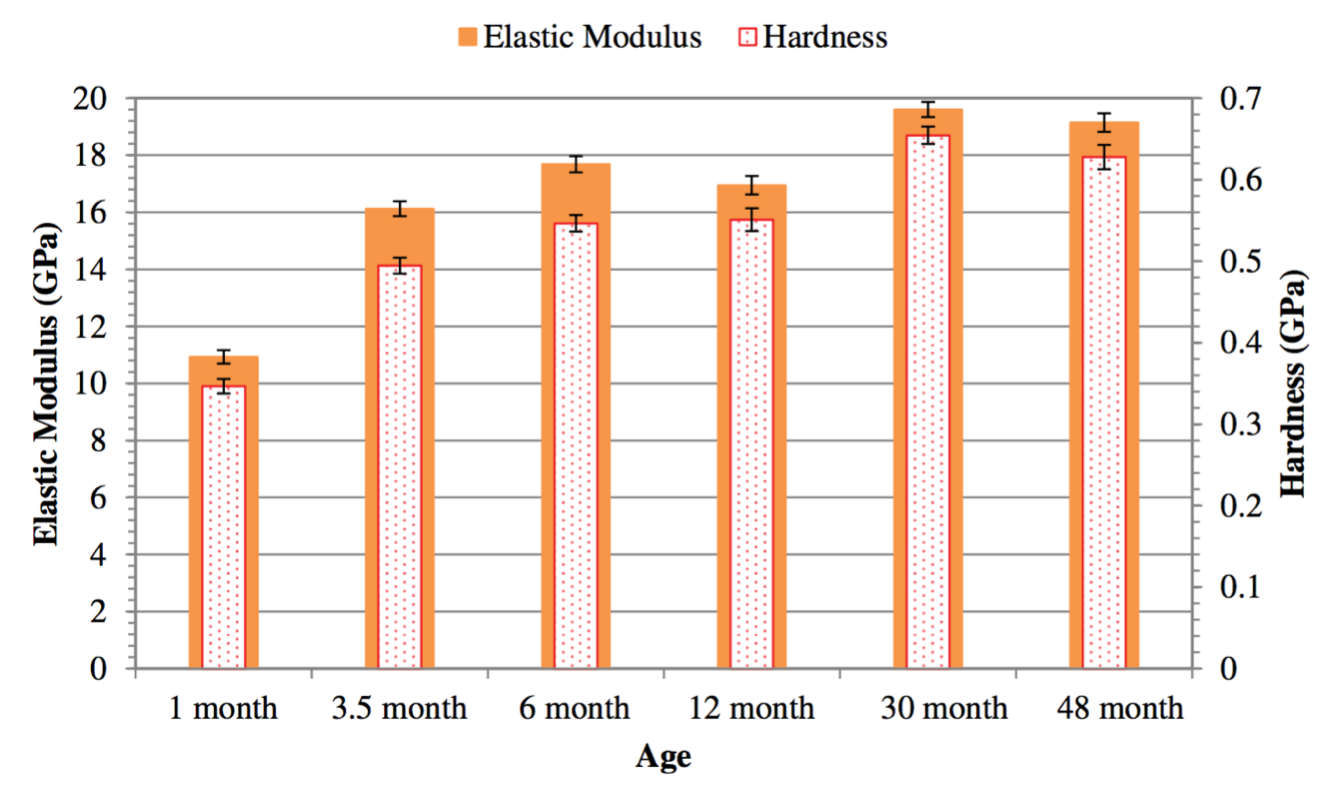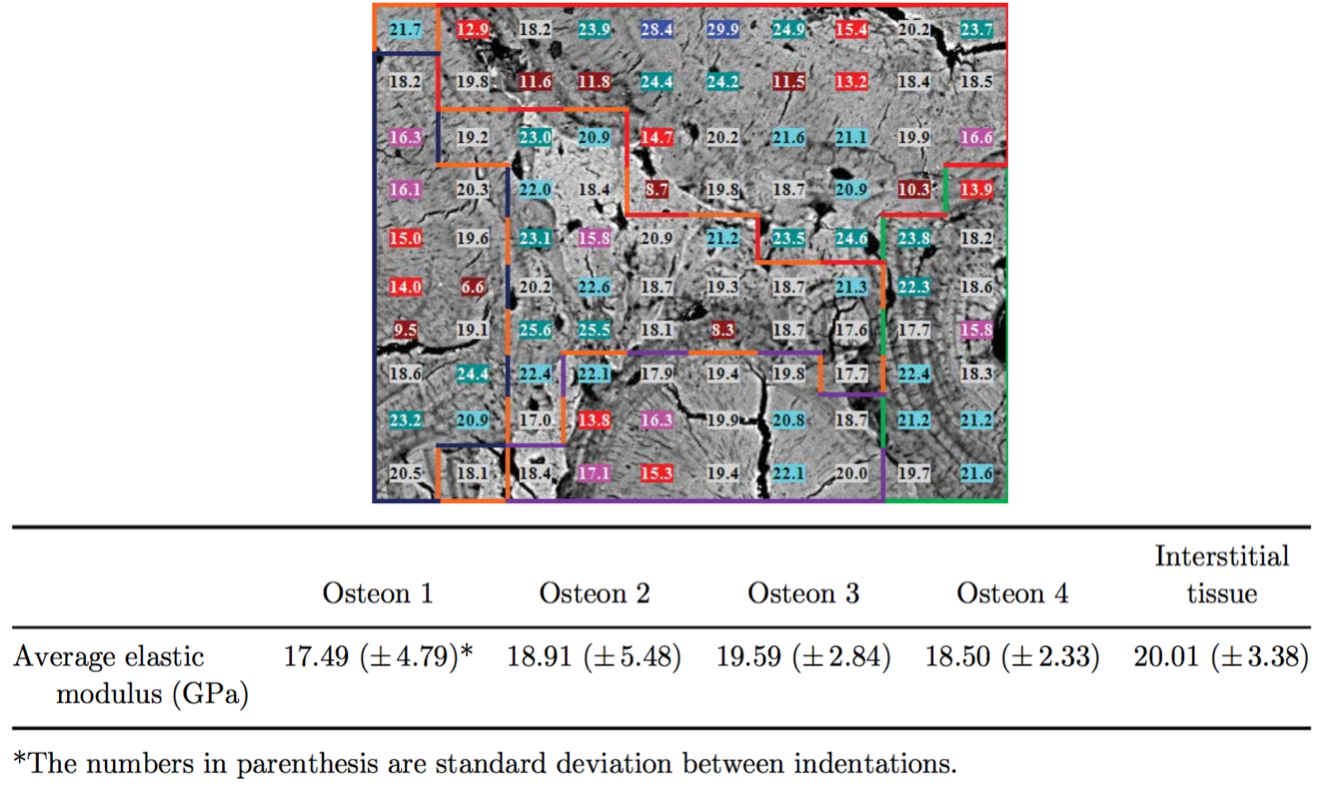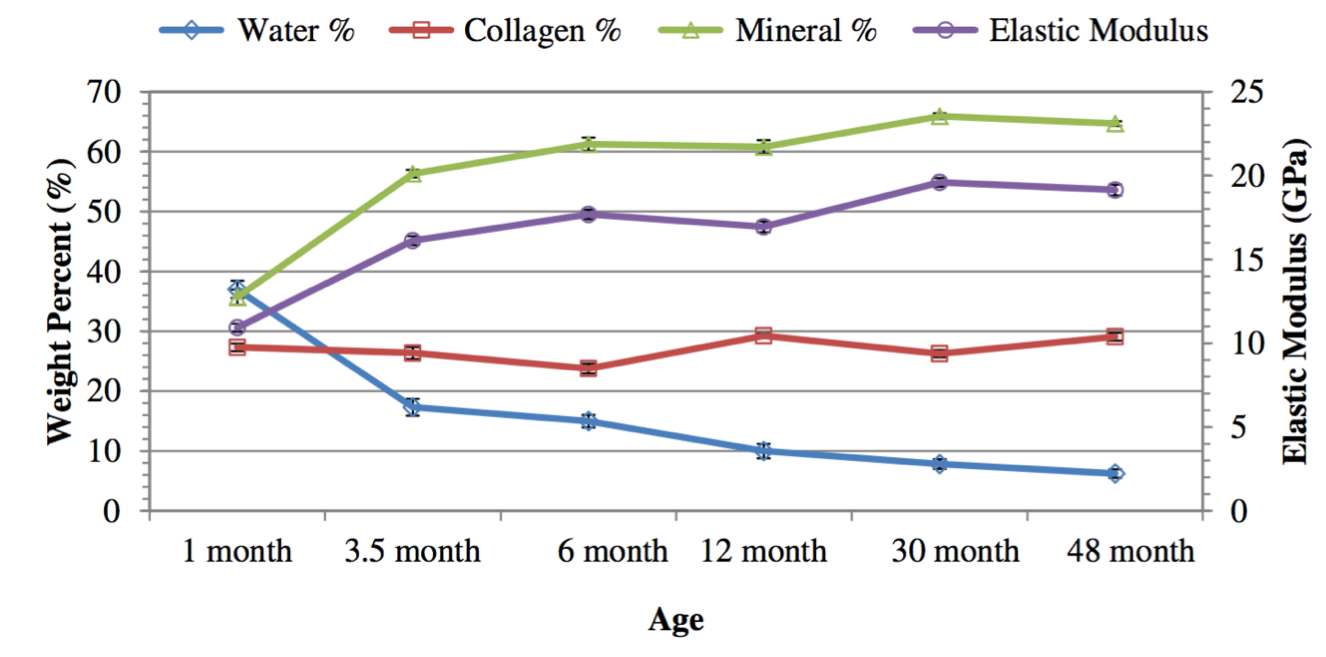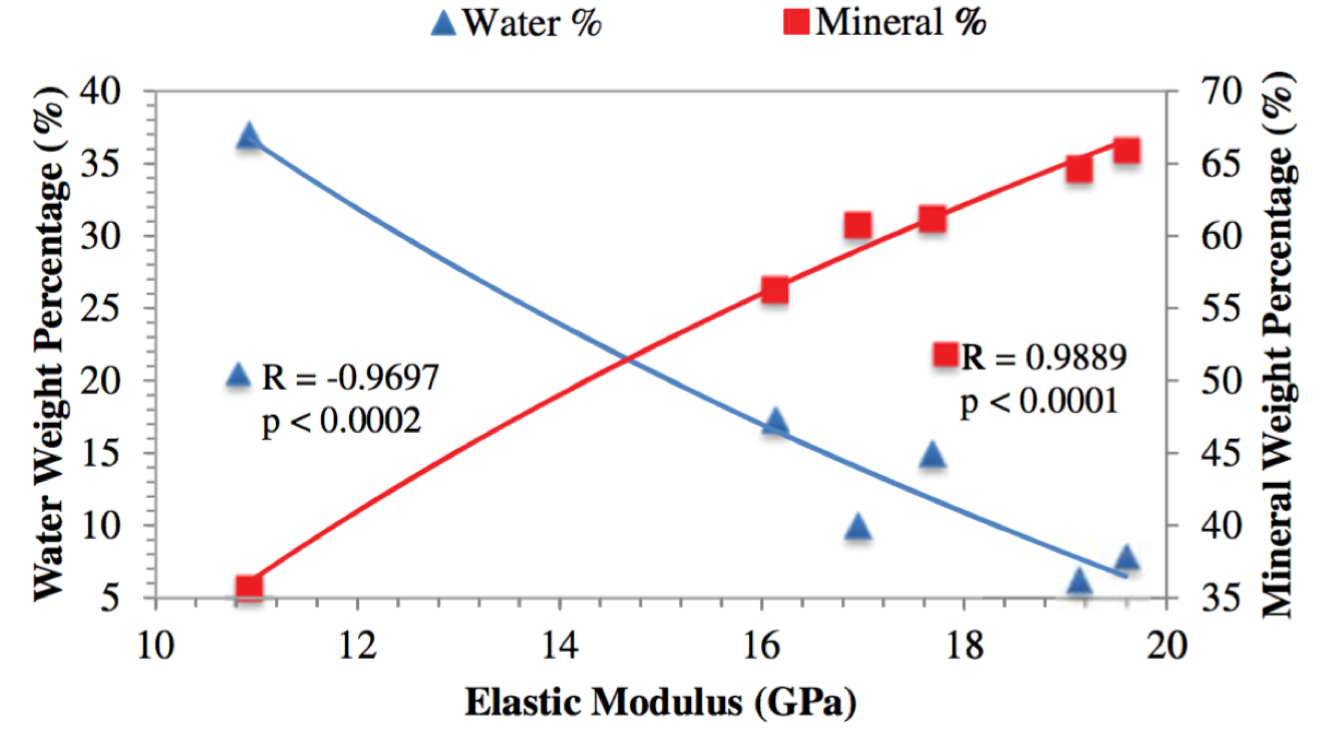Bone tissue has an intricate arrangement of material structures at multiple length scales which work in harmony to perform a variety of mechanical, biological and chemical functions. The hierarchical structure of bone, spanning from the nanoscale, sub-microscale, microscale, mesoscale to the macroscale, significantly contributes to high stiffness, strength, toughness, and energy absorption, light weight and other remarkable mechanical properties of bone. In MCMB LAB, we investigate the multiscale characterization and modeling of bone which provide structure-composition-properties relations. To characterize the bone structure and composition, we use micro-computed tomography, transmission electron microscopy, ash and water contents, whereas we implement nanoindentation, microindentation (reference point indentation) and other traditional mechanical tests such as fracture test to measure mechanical properties of bone. The outcomes of our experimental studies are used as inputs for our numerical and analytical models as well as the validation of modeling results. Modelling of bone, accounting for different scales in a conjunction with experimental works, provides new and needed insights into the fracture and strength of bone, which, in turn, can lead to improved diagnostic tools and drugs for the treatment of bone diseases such as osteoporosis. Elastic modulus and hardness of young porcine cortical bone obtained by nanoindentation plotted as a function of age.Error bars represent standard error between indentations. The results show that bone develops at a very quick rate after birth. This work was done in collaboration with Dr. Jasiuk’s lab (UIUC).
Elastic modulus and hardness of young porcine cortical bone obtained by nanoindentation plotted as a function of age.Error bars represent standard error between indentations. The results show that bone develops at a very quick rate after birth. This work was done in collaboration with Dr. Jasiuk’s lab (UIUC).
 SEM Backscatter image of the four osteons and interstitial bone indented with a 10*10 grid pattern on the 30-month bone sample. Elastic modulus values for each indentation are given on the image. Average elastic modulus of osteons and interstitial bone, reported in the table, show that the interstitial bone is stiffer than the osteons.This work was done in collaboration with Dr. Jasiuk’s lab (UIUC).
SEM Backscatter image of the four osteons and interstitial bone indented with a 10*10 grid pattern on the 30-month bone sample. Elastic modulus values for each indentation are given on the image. Average elastic modulus of osteons and interstitial bone, reported in the table, show that the interstitial bone is stiffer than the osteons.This work was done in collaboration with Dr. Jasiuk’s lab (UIUC).
 Combined data on the elastic modulus (obtained at the local level: nanoscale) and the composition of bone (obtained using Ash content test at the global level: macroscale) as a function of age. As age increases, the elastic modulus and mineral content increase, the water content decreases, while the collagen content remains relatively constant.
Combined data on the elastic modulus (obtained at the local level: nanoscale) and the composition of bone (obtained using Ash content test at the global level: macroscale) as a function of age. As age increases, the elastic modulus and mineral content increase, the water content decreases, while the collagen content remains relatively constant.
 Correlation between elastic modulus (obtained at the local level: nanoscale) and ash content results (obtained at the global level: macroscale).
Correlation between elastic modulus (obtained at the local level: nanoscale) and ash content results (obtained at the global level: macroscale).
Related Publications
- Sabet, A.F., Raeisi Najafi A., Hamed, Elham, Jasiuk, I.; “Modeling of Bone Fracture and Strength at Different Length Scales – A Review”, Journal of the Royal Society Interface Focus, vol. 6(1), 20150055, 2016.
- Chittenden M., Raeisi Najafi A., Li J. Jasiuk, I.; “Nanoindentation and Ash Content Study of Age-Dependent Changes in Porcine Cortical Bone” Journal of Mechanics in Medicine and Biology, vol. 15, 1550074, 2015.
- Rasoulian R., Raeisi Najafi A., Jasiuk I.; “Reference Point Indentation Study of Age-related Changes in Porcine Femoral Cortical Bone” Journal of Biomechanics, vol 46, pp. 1689-1696, 2013.
